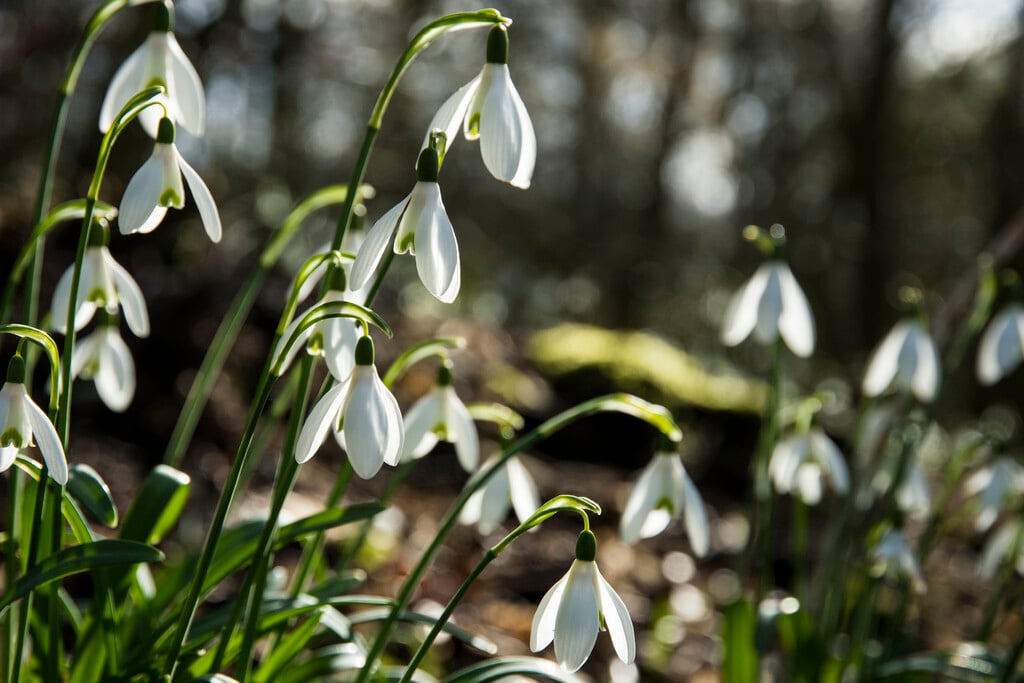Galanthus nivalis

common snowdrop
A perennial to 15cm, with narrow, grey-green leaves and solitary, nodding, fragrant white flowers 2.5cm in length, the inner segments marked with green at the tip
Other common names
Candlemas bellsCandlemas lily
see morecommon bells
fair maids of February
little sister of the snows
purification flower
Synonyms
Galanthus nivalis 'Simplex'Size
Ultimate height
0.1–0.5 metresTime to ultimate height
2–5 yearsUltimate spread
0–0.1 metreGrowing conditions
Moisture
Moist but well–drained, Well–drainedpH
Acid, Alkaline, NeutralColour & scent
| Stem | Flower | Foliage | Fruit | |
| Spring | Green Grey Silver | |||
|---|---|---|---|---|
| Summer | ||||
| Autumn | ||||
| Winter | Green White | Green Grey Silver |
Position
- Partial shade
Aspect
South–facing or North–facing or West–facing or East–facing
Exposure
Exposed or Sheltered Hardiness
H5Botanical details
- Family
- Amaryllidaceae
- Native to GB / Ireland
- No
- Foliage
- Deciduous
- Habit
- Tufted
- Potentially harmful
- Humans/Pets (dogs, cats): Harmful if eaten. Wear gloves and other protective equipment when handling. For further information and contact numbers regarding pets, see the HTA guide to potentially harmful plants
- Genus
Galanthus are dwarf bulbous perennials with linear or strap-shaped leaves, and solitary, often honey-scented, nodding flowers with 3 white outer tepals and 3 smaller inner ones often marked with green
- Name status
Correct
- Plant range
- Europe
How to grow
Cultivation
Grow in humus-rich, moist but well-drained soil that does not dry out in summer. See snowdrop cultivation for further information.
Propagation
Propagate by seed, sown in containers in an open frame when ripe or division when foliage dies back. Seed may not come true
Suggested planting locations and garden types
- Cottage and informal garden
- Rock garden
- Wildflower meadow
- Flower borders and beds
- Underplanting of roses and shrubs
Pruning
No pruning required
Pests
May be susceptible to narcissus bulb fly
Diseases
May be susceptible to snowdrop grey mould
Love gardening
Sign up to receive regular gardening tips, inspiration, offers and more
View our Privacy Policy
Get involved
The Royal Horticultural Society is the UK’s leading gardening charity. We aim to enrich everyone’s life through plants, and make the UK a greener and more beautiful place.

